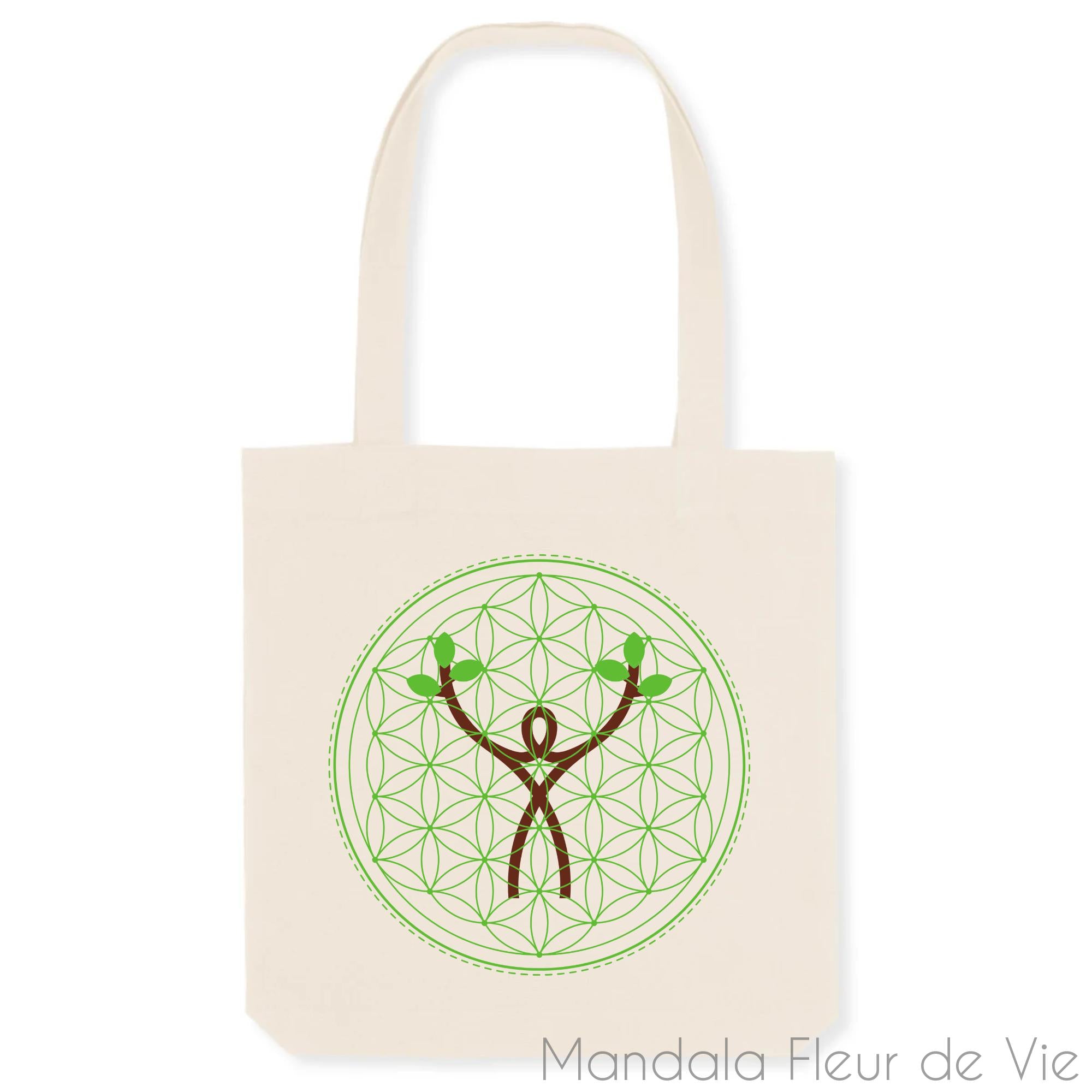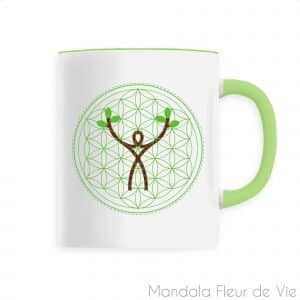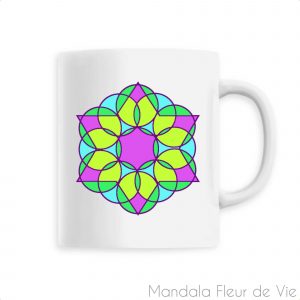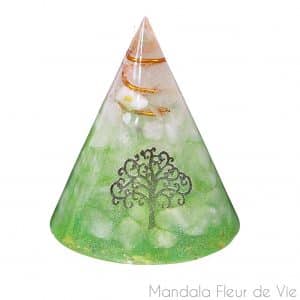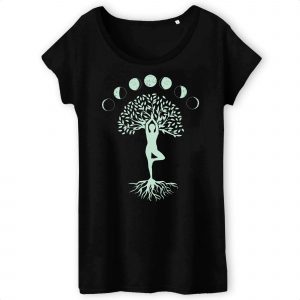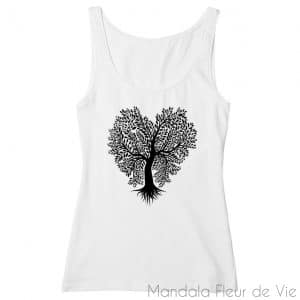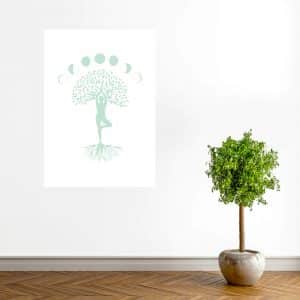Mandala Flower of Life & Tree of Life Tote Bag, Eco-Friendly
– Made in France print
– 300 g/m²
– 80% recycled cotton, 20% polyester (GOTS label)
– Long handles with reinforced cross stitching
– High folded edges for added strength and premium finish
– Stitching on the bottom of the bag to create volume
– Dimensions: 37 x 43 cm
– Delivery within 4 to 8 days
Flower of Life, Sacred Geometry and Metatron’s Cube
n
If you’re wondering why more and more people are interested in the Flower of Life,
you’re definitely in the right place!
Welcome to our Flower of Life universe!
At Mandala Flower of Life, we offer you much more than just a few items with Flower of Life patterns; we open the doors to sacred geometry so that you can truly be, and especially become, who you truly are!
Of course, if you buy a Flower of Life t-shirt, or a sticker, or even hang a tapestry with a Flower of Life pattern in your living room, you will:
1- Change the room’s decor
2- Create a more zen environment
3- Increase the vibrational frequency of the room and the people who will be in it for a long time.
And that is already very, very satisfying!
Indeed, not only does it change your mindset, which subtly transforms; your mind opens up, becomes more peaceful, calmer…
But we also help you truly understand what the Flower of Life is and how it can change your life.
n
n
Everything you need to know about the Flower of Life
n
Since the 80s, the Flower of Life has intrigued and stirred a lot of discussion; in 1999, Drunvalo Melchizedek published a two-volume book titled The Ancient Secret of the Flower of Life; it is the most comprehensive work available on this subject.
Certainly, the Flower of Life is intriguing, but what is it exactly?
n
n
Definition and origins of the Flower of Life:
n
The Flower of Life is a very ancient geometric symbol. It has been found on numerous ancient monuments in various parts of the world.
The oldest known representation of the “overlapping circles” pattern is dated back to the 7th or 6th century BC, found on the threshold of the palace of the Assyrian king Ashur-bani-apli in Dur Sharrukin (now in the Louvre).
Another pattern has also been found drawn on the granite columns of the Temple of Osiris in Abydos, Egypt; it is a sketch with five motifs of 19 overlapping circles.
It is composed of 19 regularly spaced circles that symmetrically overlap each other.
n
n
How to draw the Flower of Life?
n
The essential tool is, of course, the compass. Choose a spacing and keep it consistent until the end of the drawing, as all the circles have the same radius.
Start by drawing the first circle, then the second by placing the compass point on a point of the first circle; the second circle will necessarily pass through the center of the first. Continue like this and draw as many circles as you want. This figure can expand infinitely.
n
n
Flower of Life and Sacred Geometry:
n
The Flower of Life is a symbol of sacred geometry. It contains many symbols of sacred geometry, such as the Platonic solids, Metatron’s Cube, the Vesica Piscis, and the Fibonacci sequence… Other symbols, such as the Seed of Life, the Tree of Life, and the Egg of Life, stem from it.
It even has a connection to Leonardo da Vinci’s famous drawing called the Vitruvian Man, which depicts the human body created according to divine proportions.
The Flower of Life also has a direct link to the Golden Ratio and the Divine Proportion, which are believed to have been used to build the pyramids of Egypt and the cathedrals.
For some, it is present everywhere, in every cell, atom, and molecular structure, and may even be the origin of life.
n
n
What is Sacred Geometry?
n
These are special figures that have specific proportions or appear to be closely related to the Golden Ratio (or Phi). They are found in ancient monuments, nature, and even the human body.
Let’s detail below the main figures of sacred geometry:
n
Platonic Solids:
n
Also known as Platonic solids, these are five polyhedra with unique properties. Their surfaces have the same area, the edges of each Platonic solid have the same length, and the angles formed by all the edges are the same. If any Platonic solid is placed in a sphere that circumscribes it at any point, all its vertices touch the inner surface of the sphere.
The Platonic solids are the cube, tetrahedron, octahedron, icosahedron, and dodecahedron.
n
Metatron’s Cube:
n
It is one of the most powerful symbols of sacred geometry. It is actually believed to be the “fruit of life,” a figure hidden in Metatron’s Cube, according to Drunvalo Melchizedek.
n
Merkaba:
n
It is the light body of the human being. In his book, Drunvalo Melchizedek explains the origin of this word. In Hebrew, Mer-Ka-Vah literally means “throne of God” and “chariot” or “vehicle”; in Egyptian, Mer-Ka-Ba breaks down to Mer meaning “light field,” Ka meaning “spirit,” and Ba representing the human body. It is actually the human light body.
n
Vesica Piscis:
n
It is one of the most prominent figures in the Flower of Life and one of the most important ratios. The Vesica Piscis is the geometric figure formed by the intersection of two circles of the same diameter, with the center of each circle lying on the circumference of the other. Also known as the mandorla (almond), this figure is considered one of the keys to Pythagorean esotericism.
n
Seed of Life:
n
The Seed of Life is at the center of the Flower of Life. It is composed of seven circles, just like the seven days of creation. Composed of six surrounding circles and a central circle, totaling seven, it can be considered as seven seeds of life.
n
n
What are the benefits of the Flower of Life?
n
The Flower of Life is a form of energy that harmonizes anything that is discordant. It continuously regenerates, so there is nothing to do to purify it.
This symbol represents creation; that is, the entire universe. The Flower of Life symbol is believed to be the origin of everything that exists in creation, without exception; all biological life forms, crystalline structures, DNA molecules.
In fact, it reminds us that all life comes from a single source. All forms of life are therefore intimately connected to the Flower of Life, which also means that all forms of life are interconnected.
n
n
How to use the Flower of Life?
n
Above all, it is a powerful meditation tool. But it can be used in everyday life in multiple ways.
The Flower of Life is used to energize water: simply pour water into a Flower of Life pitcher and let it sit for a few hours before drinking it.
The Flower of Life can be used to cleanse and recharge crystals. It is also used to create crystal grids.
It helps better preserve food, essential oils, and, in general, any substances you want to harmonize and energize.
It is also used to harmonize a space, such as a living room, waiting room, or office.
It is also very pleasant to wear it; it helps maintain a high level of energy throughout the day and serves as protection, making us less permeable to heavy and unwanted energies.
For this, you can choose a piece of jewelry like a pendant or a ring, or wear clothing such as a t-shirt.
If you like tattoos, you can get a Flower of Life tattooed on your body, and in the meantime, why not try a temporary Flower of Life tattoo.
n
nSold and shipped from France within 3 to 5 days.
Découvrez également notre Mandala Tote Bag Flower Of Life & Tree Of Life dans la catégorie Accessories.

